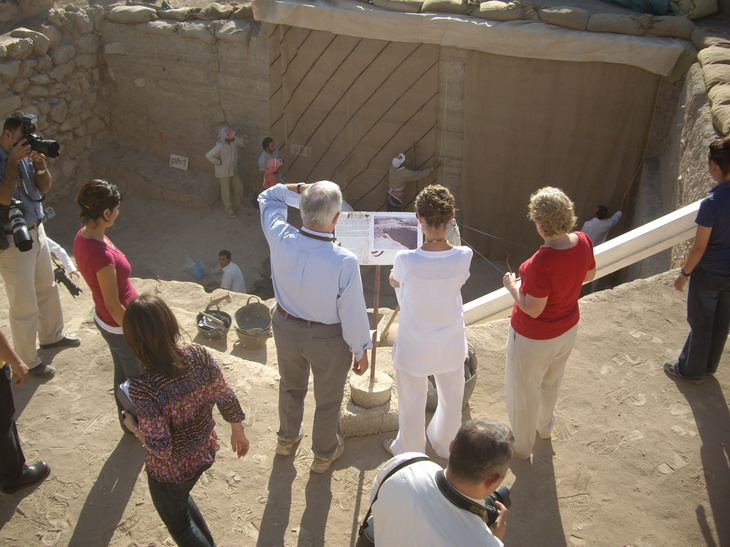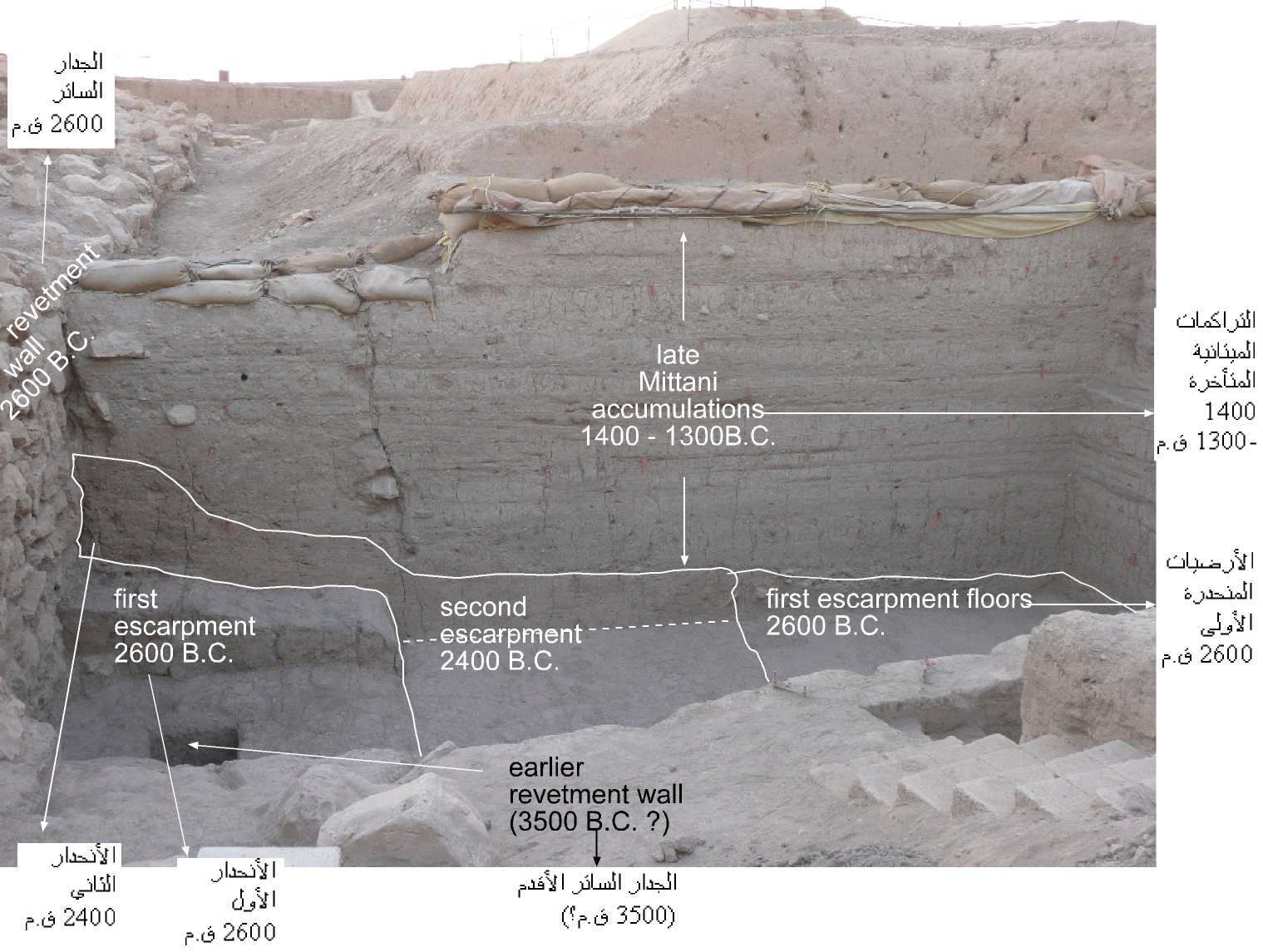Sections

Back to top

EDUCATION \ SITE PRESENTATION \ 23m
1: G. Buccellati, July 2009
| An important goal of the presentation model that I am pursuing is to include not only the monuments but also the stratigraphy as the object to be presented. In keeping with the attention due the audiences we have in mind, the conservation and presentation of stratigraphy is both a form of publication for the scholars and of education for the occasional visitor. There are especially two moments when this comes to the fore. |
| Sections are the tell tale of stratigraphic arguments. Those that are most revealing deserve to be preserved in the same manner as monuments: I chose to do this by covering them with the same material as the mudbick walls, except that oblique stripes are painted on them, to make clear the distinction from structural elements of the architecture. |

|
|
|
A visual illustration provided in the accompanying panel provides a template with which to read the section, which can then be inspected close-up by descending the steps. An additional text explains in simple terms both the function of sections in general, and the stratigraphic and cultural inferences that can be drawn from this particular one. Back to top |

|
The larger nexusThe other unique contribution that proper site presentation can make is to show those nexuses that link specific stratigraphic moments across vast expanses of space – in the case of Mozan, for instance, the links among different segments of the monumental Temple Terrace, or the link between Temple and Palace. Scholars can best appreciate this de visu, however much the published synthetic sections may already have prepared them to see, in the abstract, such connections. Laymen are captivated by the way in which a potentially complex argument is made tangible in a very concrete way, especially since this is supported by spectacular visually attractive monumental architecture. |